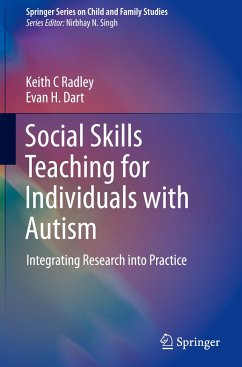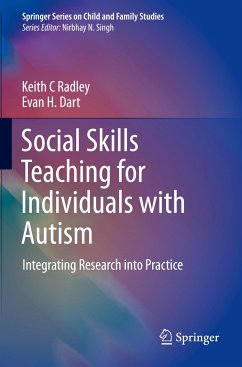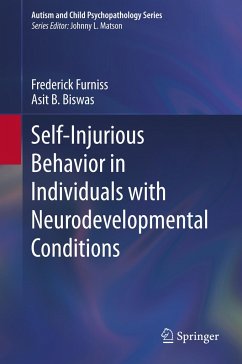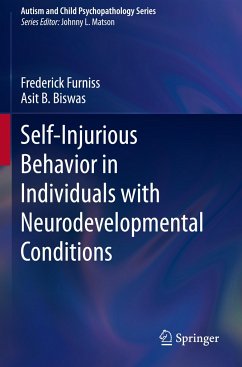
Working Memory and Individuals with Asperger's Disorder
A Comparison Between the Working Memory Capacity of Typical Boys and Boys Who Meet Criteria for Asperger s Disorder
Versandkostenfrei!
Versandfertig in 6-10 Tagen
39,99 €
inkl. MwSt.

PAYBACK Punkte
20 °P sammeln!
Children who meet the diagnostic criteria for Asperger s Disorder (AD) are characterized by an information processing deficit (IP) related to how they process the complex information inherent in non-verbal and verbal social tasks. To understand the specific type of IP deficit more precisely, this study investigated the IP deficit specific to working memory capacity. Working memory capacity demonstrates how the individual can interpret, store, and manipulate specific types of information (e.g., verbal, visual, and spatial) in isolation and simultaneously. This study compared the working memory ...
Children who meet the diagnostic criteria for
Asperger s Disorder (AD) are characterized by an
information processing deficit (IP) related to how
they process the complex information inherent in non-
verbal and verbal social tasks. To understand the
specific type of IP deficit more precisely, this
study investigated the IP deficit specific to
working memory capacity. Working memory capacity
demonstrates how the individual can interpret,
store, and manipulate specific types of information
(e.g., verbal, visual, and spatial) in isolation and
simultaneously. This study compared the working
memory capacity of adolescent males demonstrating AD
with that of their typically developing peers. The
findings revealed significant differences in working
memory capacity between the two groups, suggesting
that the IP deficit that occurs within the context
of social interactions relates to working memory.
These findings provide support for innovative
interventions that focus on improving working memory
capacity rather than interventions that focus on
rote memory learning that is situation based within
specific social contexts.
Asperger s Disorder (AD) are characterized by an
information processing deficit (IP) related to how
they process the complex information inherent in non-
verbal and verbal social tasks. To understand the
specific type of IP deficit more precisely, this
study investigated the IP deficit specific to
working memory capacity. Working memory capacity
demonstrates how the individual can interpret,
store, and manipulate specific types of information
(e.g., verbal, visual, and spatial) in isolation and
simultaneously. This study compared the working
memory capacity of adolescent males demonstrating AD
with that of their typically developing peers. The
findings revealed significant differences in working
memory capacity between the two groups, suggesting
that the IP deficit that occurs within the context
of social interactions relates to working memory.
These findings provide support for innovative
interventions that focus on improving working memory
capacity rather than interventions that focus on
rote memory learning that is situation based within
specific social contexts.












